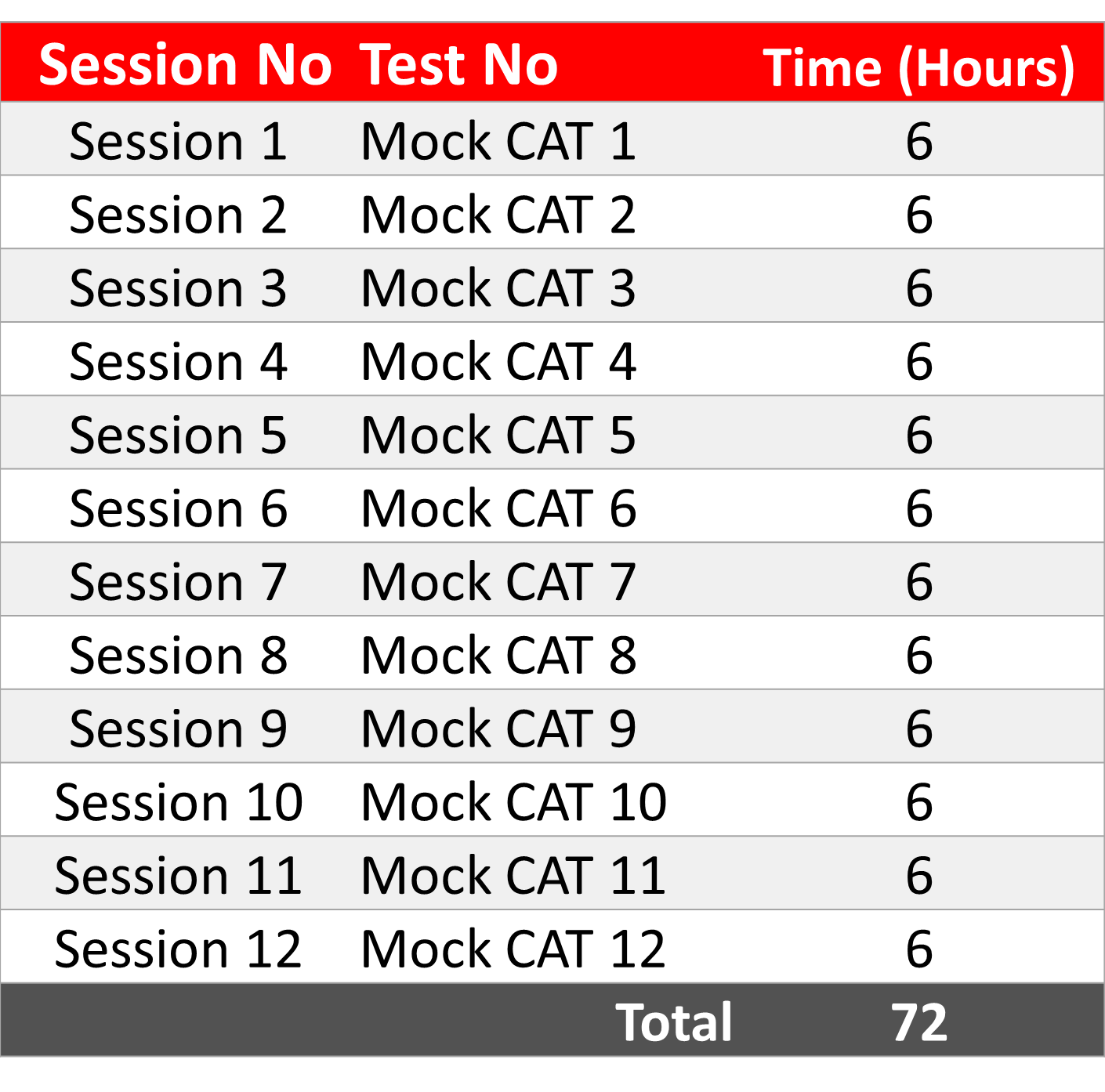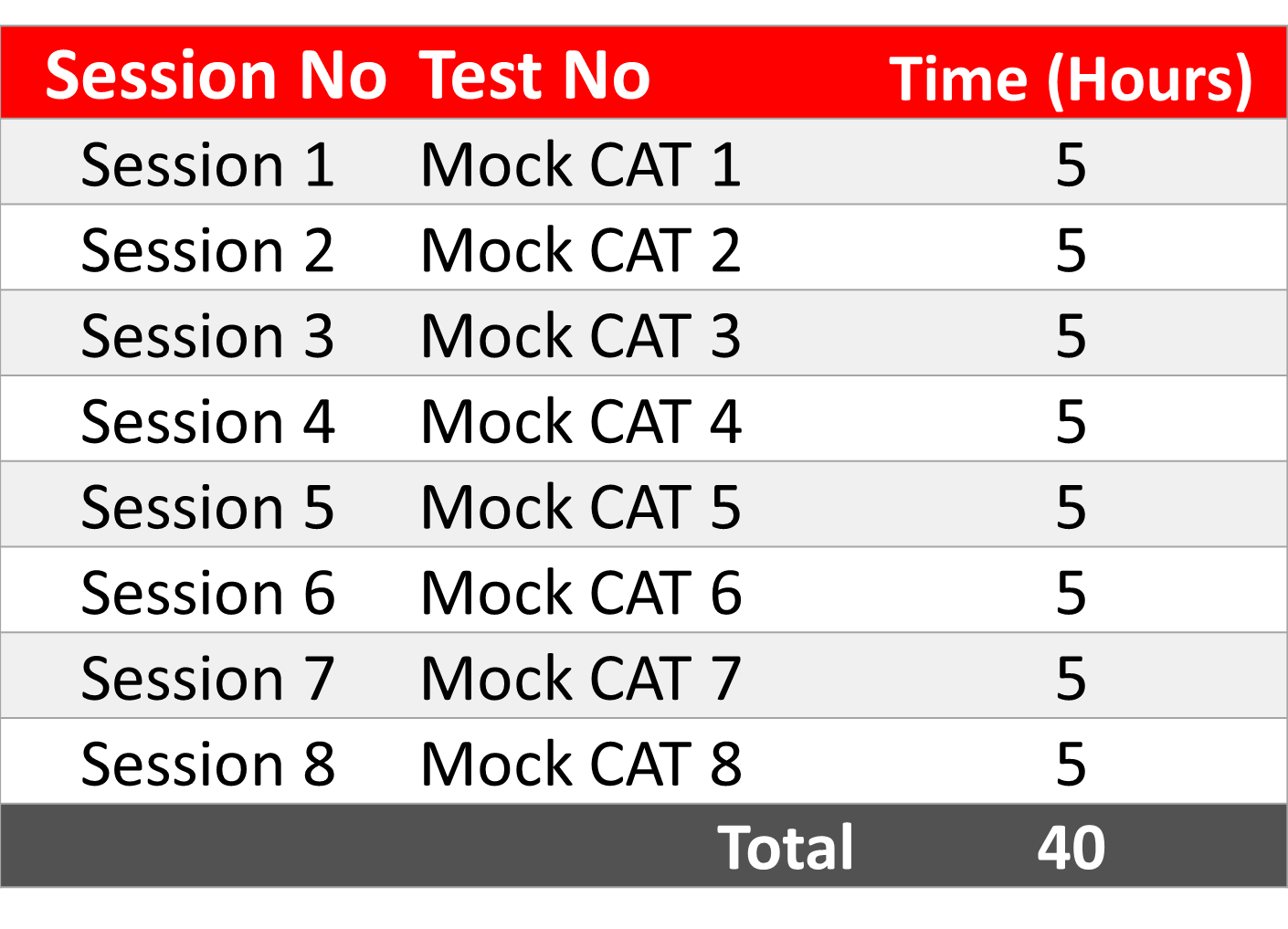Schedule for CAT Preparation
Schedule for CAT Preparation
This post outlines 2IIM's recommended schedule or timeline, that can help one plan and track their progress in their CAT prep journey. We've given an overall outline and a plan for someone who does not as yet know his/her strengths and weaknesses. Each student should create his/her own schedule and prepare with a customized plan. You are preparing to have a shot at the top few B-Schools in the Country. You SHOULD definitely have ownership over your preparation plan. Treat this as a broad framework, and not as the finished article. Note that the number of hours is just an indicative number. Spend as much time as you require to wrap your head around a topic. Each topic has learning modules, checkpoint quizzes and Prep Edge Quizzes. After completing this, students should go through the printed study material and the section tests as well. We have broken the schedule into 4 components: 1) Quant 2) Data Interpretation and Logical Reasoning 3) Verbal Ability and 4) Overall.
Quantitative Ability Schedule
This is the section that involves the maximum number of topics (the theory-intensive part of CAT Prep) and so we have broken this into a number of sub-sections. We have categorized these as: 1. Basics 2. Number Systems and Counting 3. Geometry and Allied Topics and 4. Algebra and Miscellaneous. We would recommend covering the basic ideas first as these include simpler ideas of equation framing and solving and the building blocks for all Quant. Post this, a student can choose any of the other three components to build on. There is no defined order among these sub-topics. However, we would recommend that, within each sub-topic students approach topics in the order outlined in them. For instance, in the sub-topic Geometry, we have classes on Trigonometry and Geometry:Triangles. Trigonometry appears after all the Geometry classes. We would strongly recommend that a student complete all bits of Geometry before progressing to Trigonometry.
CAT Basics

There are 10 classes in this sub-section. As you can see, these are predominantly the building blocks for Math. Unless one has an ability to solve linear quadratic equations or handle ratios, all other topics become tougher. So, start this, master these basic topics before going to the trickier modules.
Number Systems and Counting

This module comprises Number System basics and Permutation and Probability. Within these two, Permutation & Probability is the tougher topic, but is less tested in CAT.
Number Systems is a heavily tested topic and is a topic that is learnt iteratively. As in, one should learn the theory, solve a bunch of questions and then revisit the theory all over again before solving the rest of the more questions.
Once again, bear in mind that the suggested timing is only a broad benchmark and you should prepare till you get comfortable with the topic. The time suggested does NOT include the time one would take to practice questions from the topics.
Algebra and Misc Arithmetic

In many ways, this section builds on from what we might have learnt from Linear and Quadratic Equations. It is essential to get comfortable with the language of 'x' and 'y' and we focus on that detail in this sub-section. By the time you complete this topic, you should be as comfortable with the idea of extrapolating to a general case from a specific case. As in, we might start with saying Pipe A fills a tank in 10 hours and pipe B in 20 hours. Soon enough you should be able to approach questions where we say, pipe A fills in 'm' hours and pipe B in 'n' hours.
Geometry and more

Two things to keep in mind in this topic - 1) Geometry is also learnt iteratively. Learn, practice, revisit, practice again, go through the theory with proofs and then practice again. 2) Prepare for Geometry really well (a little more than required for this exam, perhaps) and then ( only then) move to the other components. Cogeo, Trigonometry and Mensuration are extensions of Geometry. So, do not try to crack them before getting a handle on Geometry.
Data Interpretation Schedule

Data Interpretation and Logical Reasoning are underestimated components of CAT preparation. Each constitutes one-sixth of the exam but does not take up more than 5% of the total preparation time usually.
For DI, we have outlined all possible data types in the theory. This section is heavily practice dependent. One can complete the 'theory' component of DI in a few hours. There is only so much one can learn about percentage growth, CAGR and market share. The practice component makes one comfortable with the idea of wrapping your head around data sets. So, practice relentlessly for DI.
Logical Reasoning Schedule

Logical Reasoning is similar to Data interpretation. One can learn approaches to different types of puzzles, like grid puzzle, seating arrangements, blood relations, tournaments and sequences. The more one invests in practicing, better one can get with Logical reasoning.
There is a school of that states that since each LR set is different, there is not much value in practising for LR. This is humbug. This is similar to saying since each RC passage is different, there is no value in building the reading habit. Practising aggressively trains the mind to spot patterns. So, keep at it.
Verbal Ability Schedule
This part deals with sub sections of Verbal ability and how to plan about getting your basics straight and cracking CAT level questions. Sub-sections include Reading comprehension, Sentence correction, Sentence rearrangement, text completion etc. It also has sub-section on Grammar, one can learn out of one's own interest.
Reading Comprehension

For the reading comprehension section, we have built the content to cover passages from all different topics and styles. So, you will find topics from Economics to Philosophy here, with styles from fact-heavy to sarcasm-heavy.
The most important part is what we have mentioned as session 6 to 100. If you are starting your CAT preparation today, start reading for an hour or two from today. Today is the best day to start reading. Reading is the most important component of CAT preparation.
Other Verbal

The non-RC component of CAT focuses more on Sentence Rearrangement, Sentence Elimination and Critical Reasoning. Focus more on these, and cover the rest to get a reasonable sense of the patterns.
For this section also, having the reading habit pays off. A sense of how paragraphs are built comes from having a reading habit and not merely from solving lots of Sentence Rearrangement questions.
Grammar

Grammar is not that heavily tested, but it is an ocean on its own. So, we have kept this as a separate sub-section. A big part of learning is learning to satiate curiosity, for no ostensible reason. So, if you have that, please have a dip into this section
Overall Revision

This section chalks out an overall plan to revise all that has been learnt. Includes Revision of sections, Mock cat and analysis, Paper based mock cats and analysis.
This goes with saying, visit these revision lessons after you have completed the learning part.
Mock CAT and Analysis

Mock cats form the important part in getting to know the look and feel of the exam. It's very important that an aspirant takes at least 15 mocks before appearing for the exam. Taking mocks has several benefits like getting used to concentrating for 3 straight hours, getting to know your strengths and weaknesses, and acquiring the ability to see the overall picture. Every mock has been alotted 6 hours in the schedule. One spends three hours taking a mock. One should spend at least three hours analyzing the mock.
Start taking mocks reasonably early. Do not wait to complete the entire learning component to start taking mock CATs.
Practice Mock CATs

These mocks are based on previous CAT papers from 2000 to 2008. Go through this to familiarize yourself with the style of questions CAT chooses. Also, keep in mind that frequently, CAT picks a question type that they have used before.
A Fermat Education Initiative
10-C, Kalinga Colony
Bobbilliraja Salai, K K Nagar
Chennai - 600 078
Phone: +91 44 4505 8484
E-mail: rajesh@2iim.com

